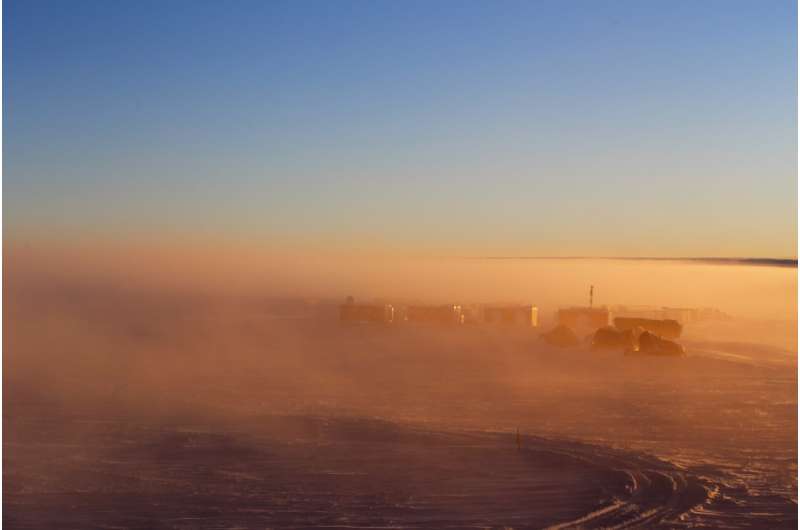Credit: European Space Agency
As the Northern hemisphere tucks into longer nights, Antarctica bursts into its season of sunlight.
After four months of night, the crew of Concordia research station, located on Dome C in the Antarctic peninsula, saw first light in August, marking the end of the dreaded winter-over, a period of darkness and isolation.
The arrival of spring means the residents of Antarctica say goodbye to the last true night and those Milky Way views.
Each year, ESA sponsors a research medical doctor through the winter months to run experiments on the rest of the 15-strong crew. There are few other places on Earth that resemble the isolation and extreme climate astronauts will endure on other planets—giving ESA the opportunity to test technology and learn how humans behave in close quarters.
Current ESA-sponsored medical doctor Nadja Albertsen is wrapping up her residency at Concordia.
In addition to running simulations and collecting blood and urine samples, Nadja spent the year blogging about life and science in the Polar Desert. You can find her posts on the Chronicles from Concordia blog. Read also a CNN feature on life at Concordia and how it's preparing humans for Mars.
Ahead of the influx of summer visitors, the crew are also busy with housekeeping: linens are washed, mattresses are cleaned and changed, and fresh food supplies are on their way.
Concordia hosts up to 80 researchers in the busy summer months who flock to Concordia to check equipment, setup sensors and run experiments for a few weeks.
The next ESA-sponsored medical doctor is Stijn Thoolen. He arrives with and his fellow crew mates for their Antarctic stay in November.
Provided by European Space Agency
























